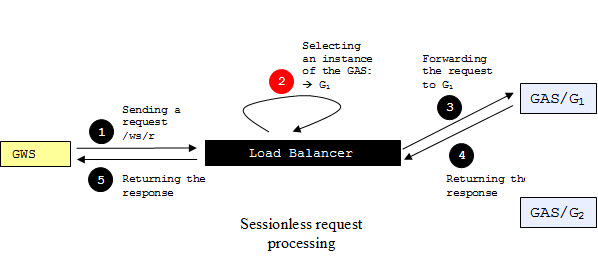Sessionless request processing
Load balancing sessionless requests among several GAS instances does not require any particular knowledge of the incoming request.
Generally, the load balancing tool offers rules to do sessionless load balancing by itself. Depending on the tool, those rules may go from a simple round-robin algorithm to more sophisticated ones like choosing a server according to the available memory or to the time that it takes to respond to a network request.

Figure 1 shows the processing of a sessionless request. It takes the following steps:
- A web Service client tool sends a request to the load balancer server.
- The load balancer server is configured to dispatch the requests over two GAS instances. It does not matter if those instances are installed on separate servers, or if they are on the same server configured to listen at different ports. The routing really depends only on the capabilities of the load balancing tool. In this example, it happens to choose the instance G1.
- The request is forwarded to G1.
- The response is returned to the load balancer server.
- The response is returned to the client.